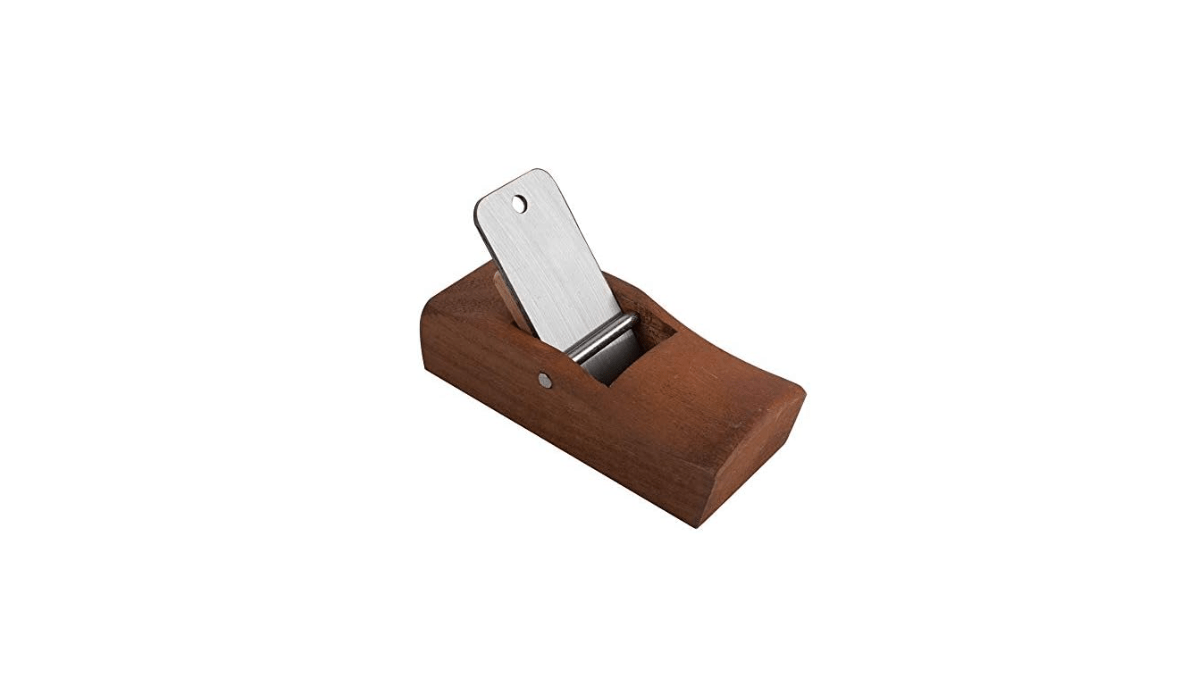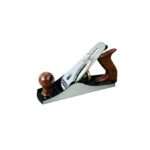A Japanese hand plane is a traditional woodworking tool used in Japan for smoothing and shaping wood. It is an essential tool in Japanese carpentry and woodworking and has a long history dating back centuries. They are highly regarded for their craftsmanship and precision. They require skill and practice to use effectively.
Top Japanese hand plane:
1. KAKURI Japanese Block Plane 50mm

You can make smooth chamfers by polishing the wood with this hand tool. Because it is used by pulling instead of pushing, it is easy to apply force evenly, and accurately. It can be used not only for professional carpenters but also for home DIY woodworkers. The plane body is big, you can grasp it with both hands well, and is easy to sharpen the wide side at one time.
The blade is razor-sharp and durable, it is possible to restore the sharpness by sharpening the blade with a whetstone. Also, the wooden body is heavy-duty and has excellent wear resistance.
2. Japanese Wood Block Plane
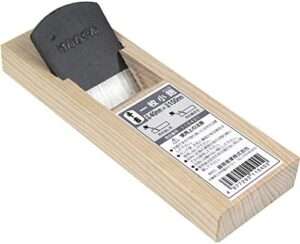
It can be a little stiff to adjust at first, as the plane body grips the blade quite firmly. Scraping work of wood surface. It is easy to use small-size planes. Blade Carbon tool steel. Since it is a cutlery handle with care.
Do not use it if there is a crack in the Plane body or cutting edge. If there is a foreign object such as a nail in the material, use it after removing it. Senkichi is one of eight original brands. It’ll make it look worse Planer is faster, easier, cheaper, smoother cleaner than paper.
3. Fujimoto Razor Plane Yasuki Steel
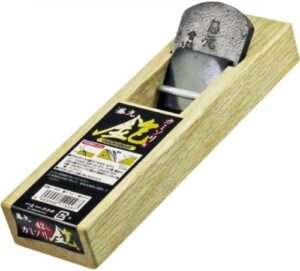
This is a plane, which is made of Hitachi Yasuji Steel Blue Paper. Comes with a blade guard cover, so there is no need to put the blade back into place. The blade cover is equipped with an elastic belt with Velcro for convenience.
Blade Yasuji Steel Blue Paper, Planetary Base Oak. Nominal Size Blade Width 1.7 inches (42 mm) (Effective Blade Width 1.5 inches (38 mm)). Plane Base: 2.4 inches (60 mm), 7.1 inches (180 mm)
4. SUIZAN Japanese Wood Block Plane
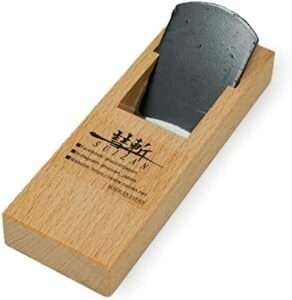
Experience flat and smooth wood like never before. After using this plane, there won’t be a need for sanding the wood. To use this plane, you will be pulling it towards you – a technique that originated in Japan. Experience the culture and try something a little different. The product’s design, all the way to assembly, is made in a town known for its craft-making tradition.
5. Mini Wooden Hand Planer
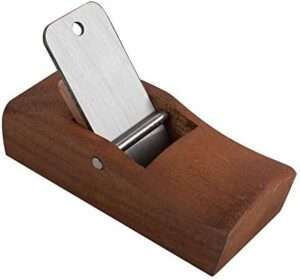
Made of natural wood and Steel blades it is not lightweight but responsive. Very easy to set up. The tools are enough for handcraft working or wooden sharpening for little details. Ideal for crafts, detail work, and small clean-up operations in tight spots. It can be used one-handed for small tasks. The blade is easy to put in and out. The blade can be replaced easily.
How does a hand plane work?
Body: A hand plane consists of a sturdy body made of wood, metal or a combination of materials. The body provides a flat and stable surface to glide over the wood.
Blade (Iron): The blade, also known as the iron, is a sharp, flat piece of steel that extends through the plane’s body. It is securely held in place with a cap iron (chip breaker) that reduces tear-out and makes the planing process more efficient.
Mouth: The mouth is the opening in front of the blade through which the blade protrudes. It determines the thickness of shavings that the plane can remove.
Adjustment Mechanism: Most hand planes have an adjustment mechanism to control the depth of cut made by the blade. By adjusting the position of the blade, you can control how much wood is removed with each pass.
Here’s how you use a hand plane:
- Preparing the Wood Surface: Ensure that the wood you’re planing is securely held in place with a workbench or a vise. The area to be planed should be relatively flat and free of large irregularities.
- Setting the Blade: Loosen the lever cap or adjustment mechanism and position the blade so that it just slightly protrudes from the mouth of the plane. You can increase or decrease the blade’s exposure to control the depth of the cut.
- Holding the Plane: Grip the plane with both hands one on the rear handle and the other on the front knob. Apply downward pressure on the front knob and forward pressure on the rear handle to keep the plane flat on the wood surface.
- Checking Your Progress: Periodically check the wood’s surface for smoothness and flatness using a straightedge or other measuring tools. Make adjustments to the blade’s depth as needed to achieve the desired result.
Different between Japanese hand plane and Western:
1. Blade Orientation: The blade in a Japanese hand plane is positioned bevel-up, meaning the bevel is facing upward. This allows for a lower cutting angle, which is well-suited for cutting end-grain and creating a very fine finish. Western hand planes typically have a bevel-down blade orientation, where the bevel is facing downward. This results in a higher cutting angle, which can be advantageous for general-purpose planing and heavy stock removal.
2. Blade Adjustment Mechanism: Traditional Japanese planes do not have a lateral adjustment lever like their Western counterparts. Instead, adjustments to the blade’s lateral position are made by tapping the side of the blade with a small hammer or mallet. Western planes usually have a lateral adjustment lever that allows for easy side-to-side adjustment of the blade’s position. Making it more convenient to achieve precise cutting.
3. Body Design: They have a wooden body with a slightly concave sole. The wooden body provides a unique feel and feedback during planing. The sole’s curve allows for easy removal of fine shavings. Western planes come in various designs, with the most common being metal-bodied planes made of cast iron or steel. Some higher-end models have wooden bodies. The sole of a Western hand plane is typically flat, which is well-suited for general-purpose planing.
Are hand planers worth it for the money?
If you primarily work on projects that require precise and fine finishing, hand planes can be highly valuable. If your projects involve more rough carpentry and heavy stock removal, power tools may be more efficient.
Come in a range of prices, from affordable options to high-end, premium models. The cost can be influenced by factors like the materials used, the design, and the craftsmanship. While high-quality planes can be more expensive, they often offer better performance, durability, and ease of use. Read more best planer board.
A Japanese hand plane is good?
Yes, it’s considered to be a very good tool by many woodworkers and craftsmen around the world. They have earned a reputation for their precision, and versatility. And the ability to produce exceptionally smooth and fine finishes. The design of the blade and the sharpness of the cutting edge allow for the creation of thin wood shavings. Which not only makes planning easier but also contributes to a smoother surface finish.
Many Japanese planes have a low-angle blade, which reduces tear-out and enhances the quality of the finished surface. The blade adjustment mechanisms in the Japanese plane are simple and intuitive. Making it easy to set the blade to the desired depth for optimal cutting.
They are typically lighter and well-balanced, making them comfortable to use for extended periods. Some woodworkers may prefer Western-style hand planes or other types. This depends on their needs and personal comfort. High-quality Japanese hand planes can be exceptional woodworking tools and can bring a lot of joy and satisfaction to the craftsperson who uses them.
Last Updated on March 7, 2024
